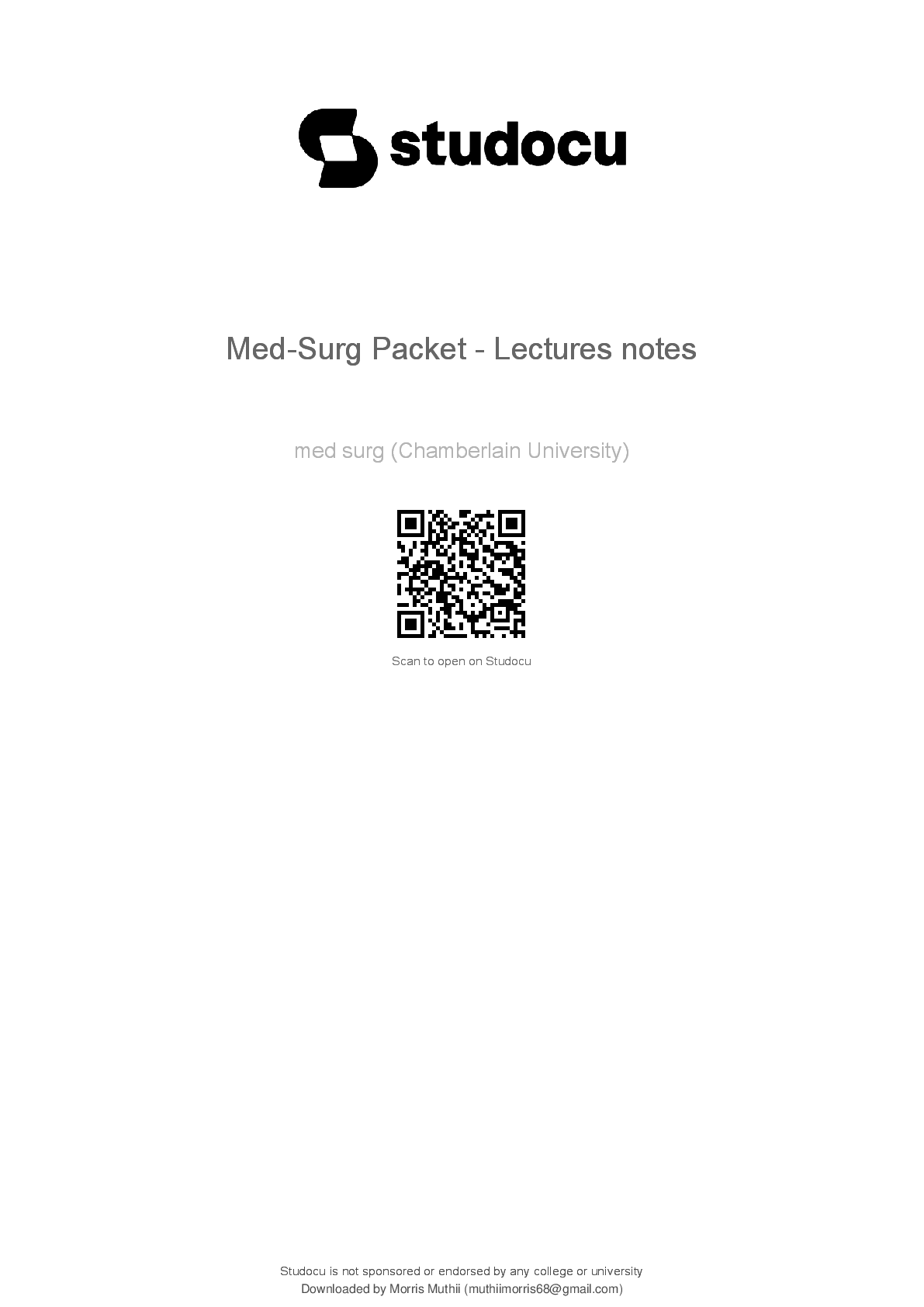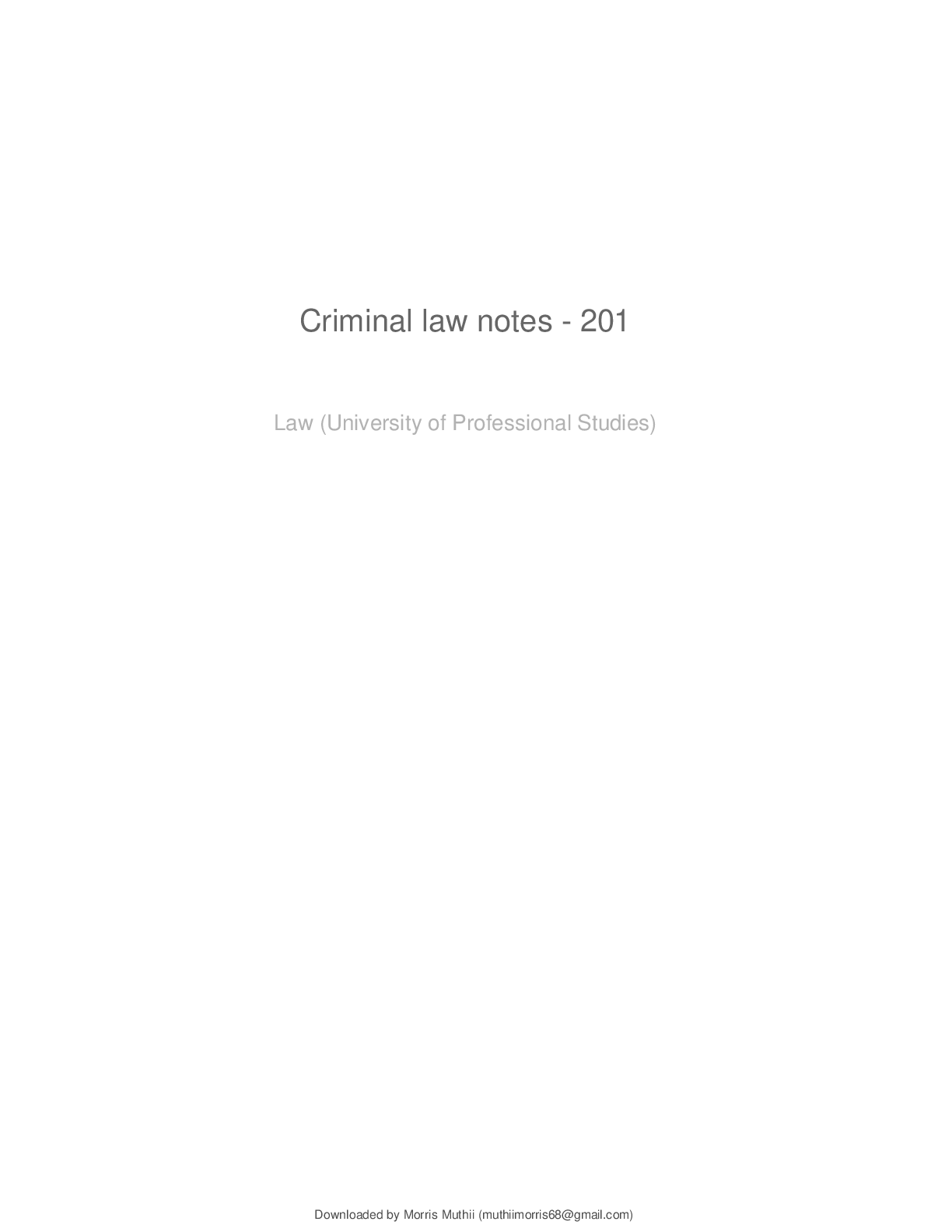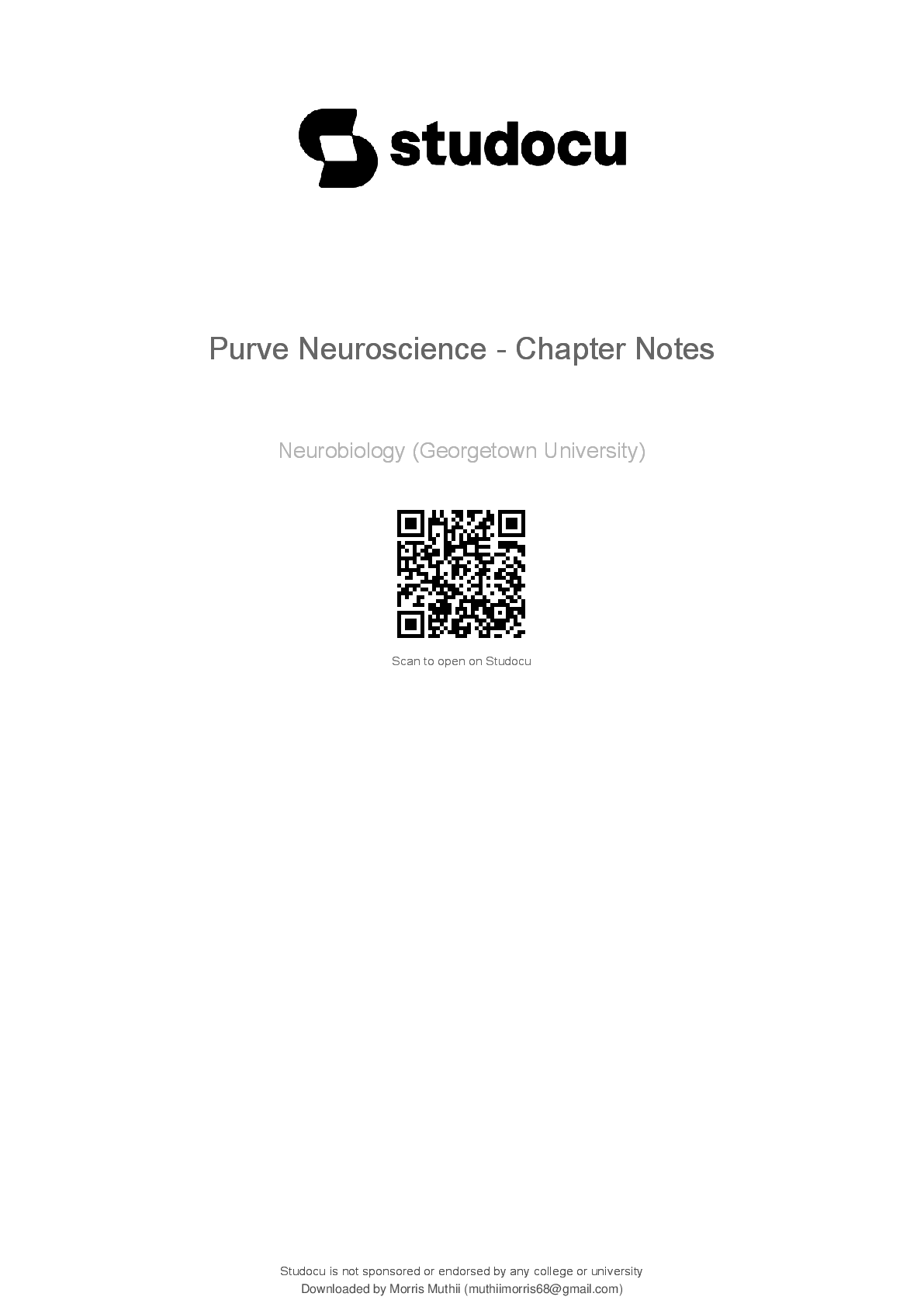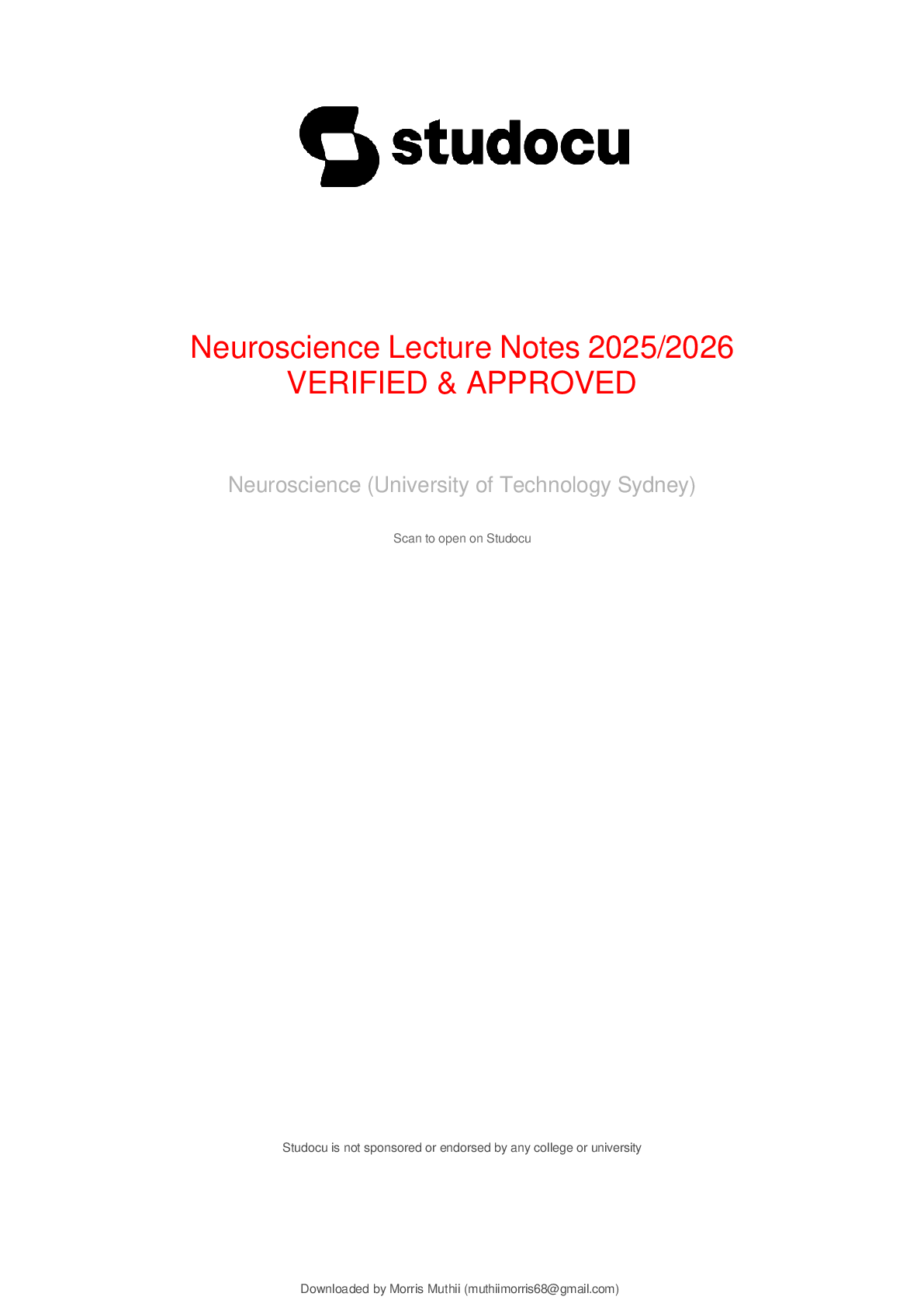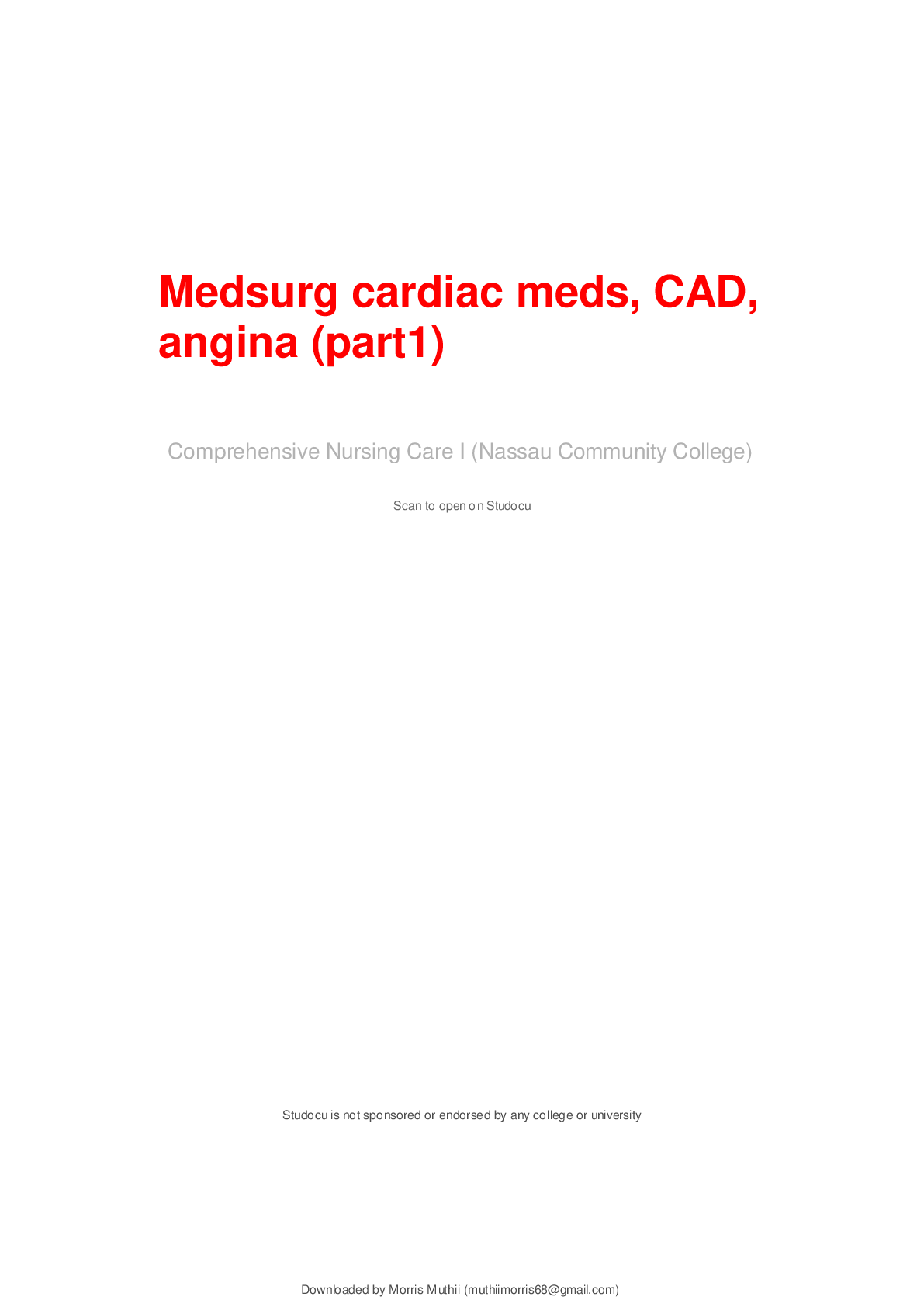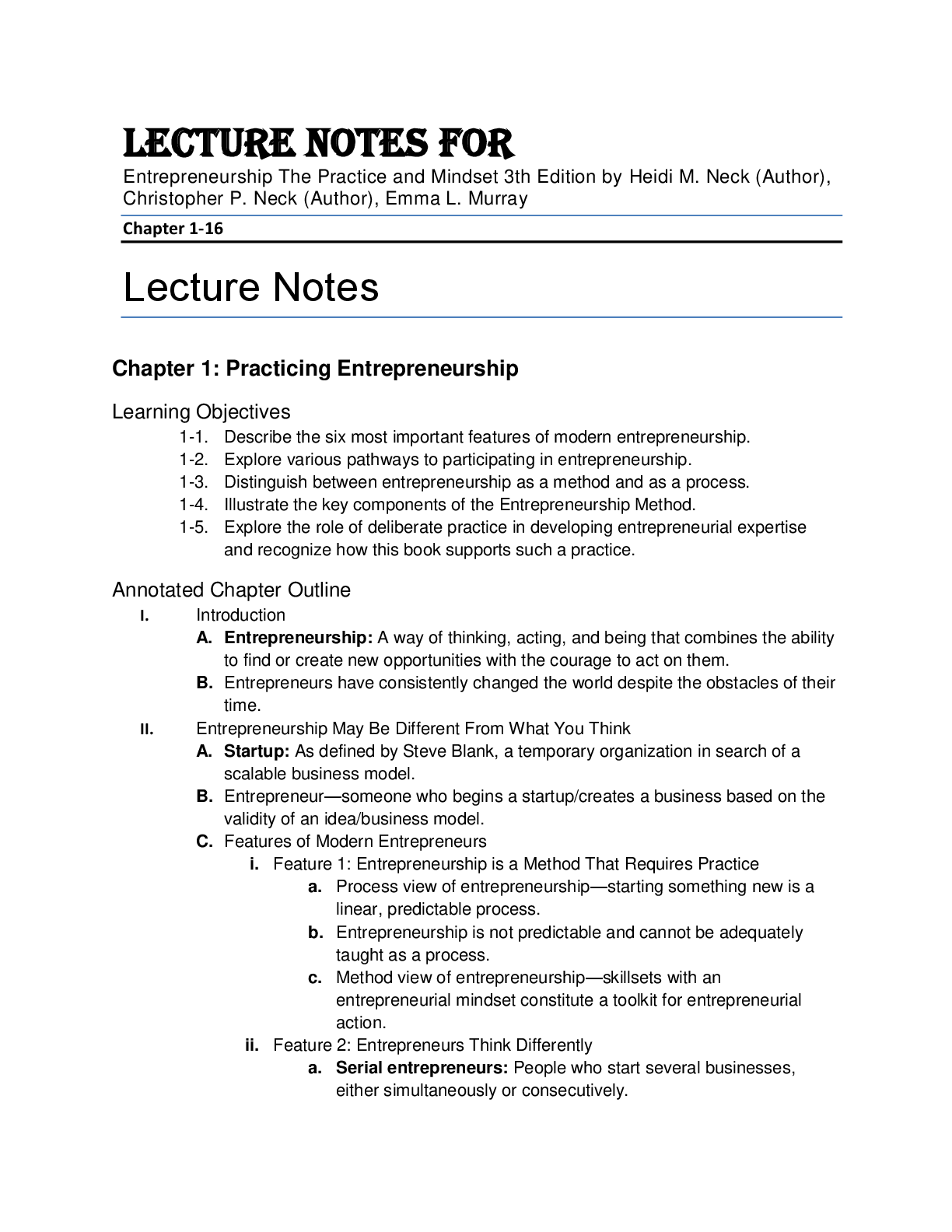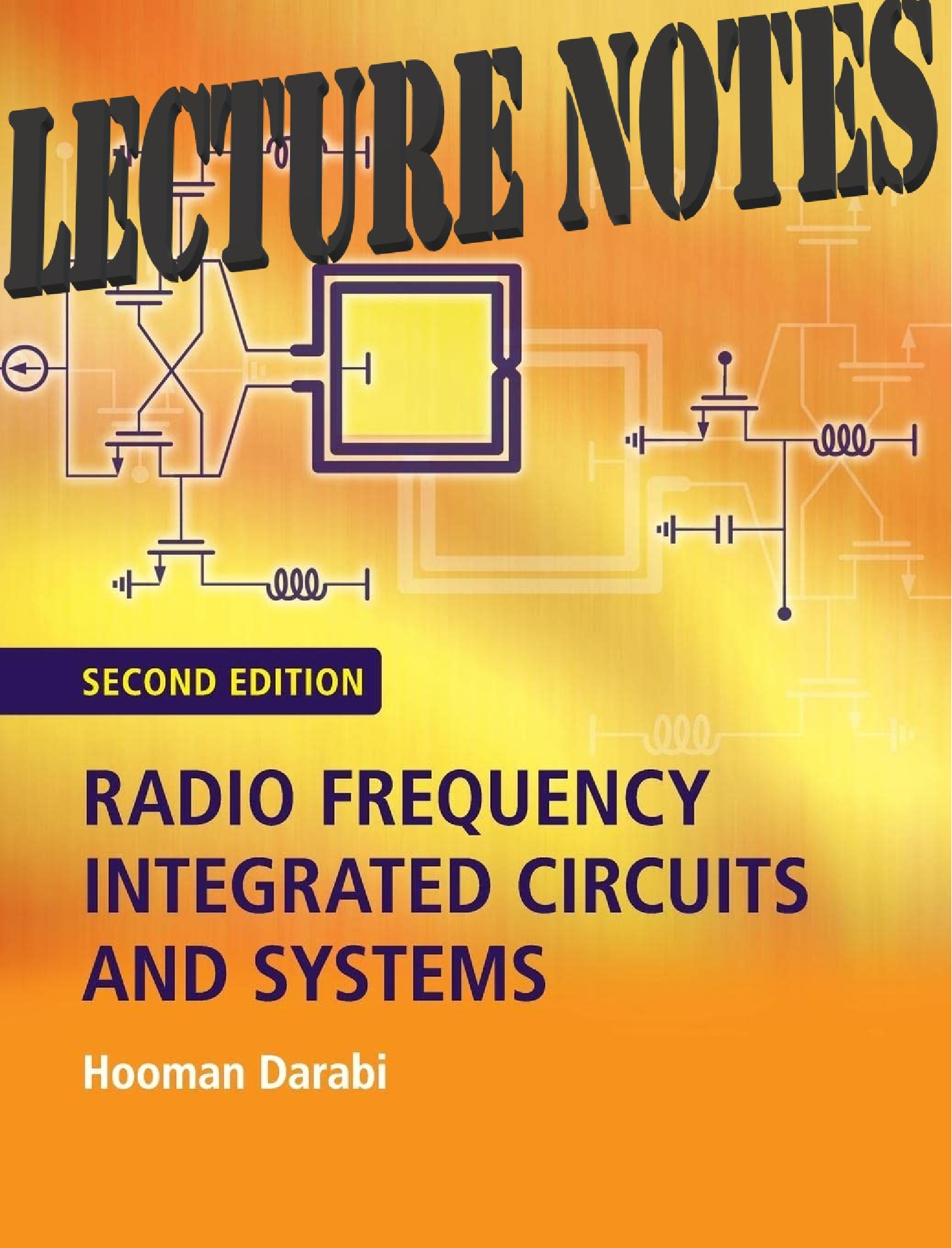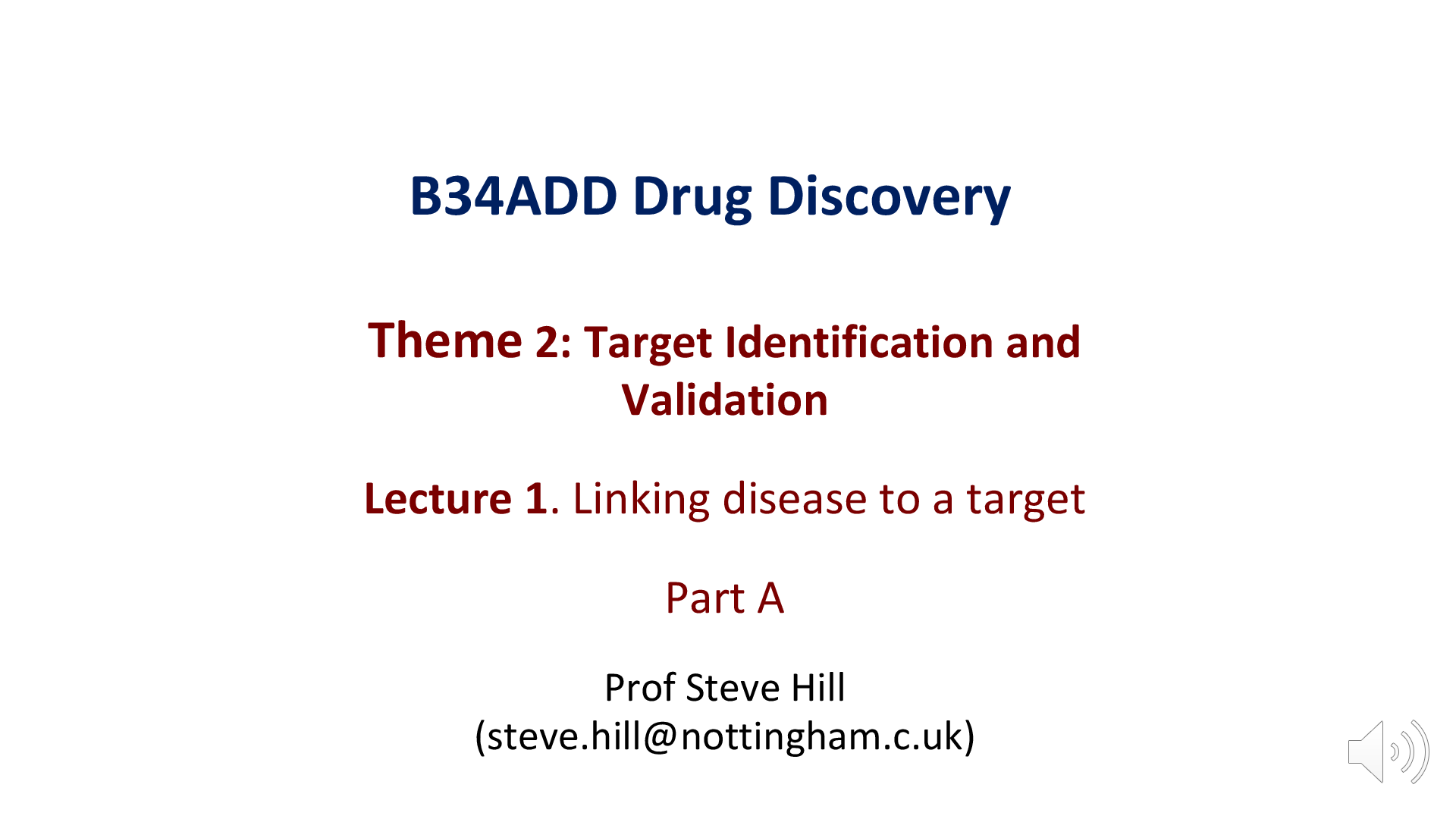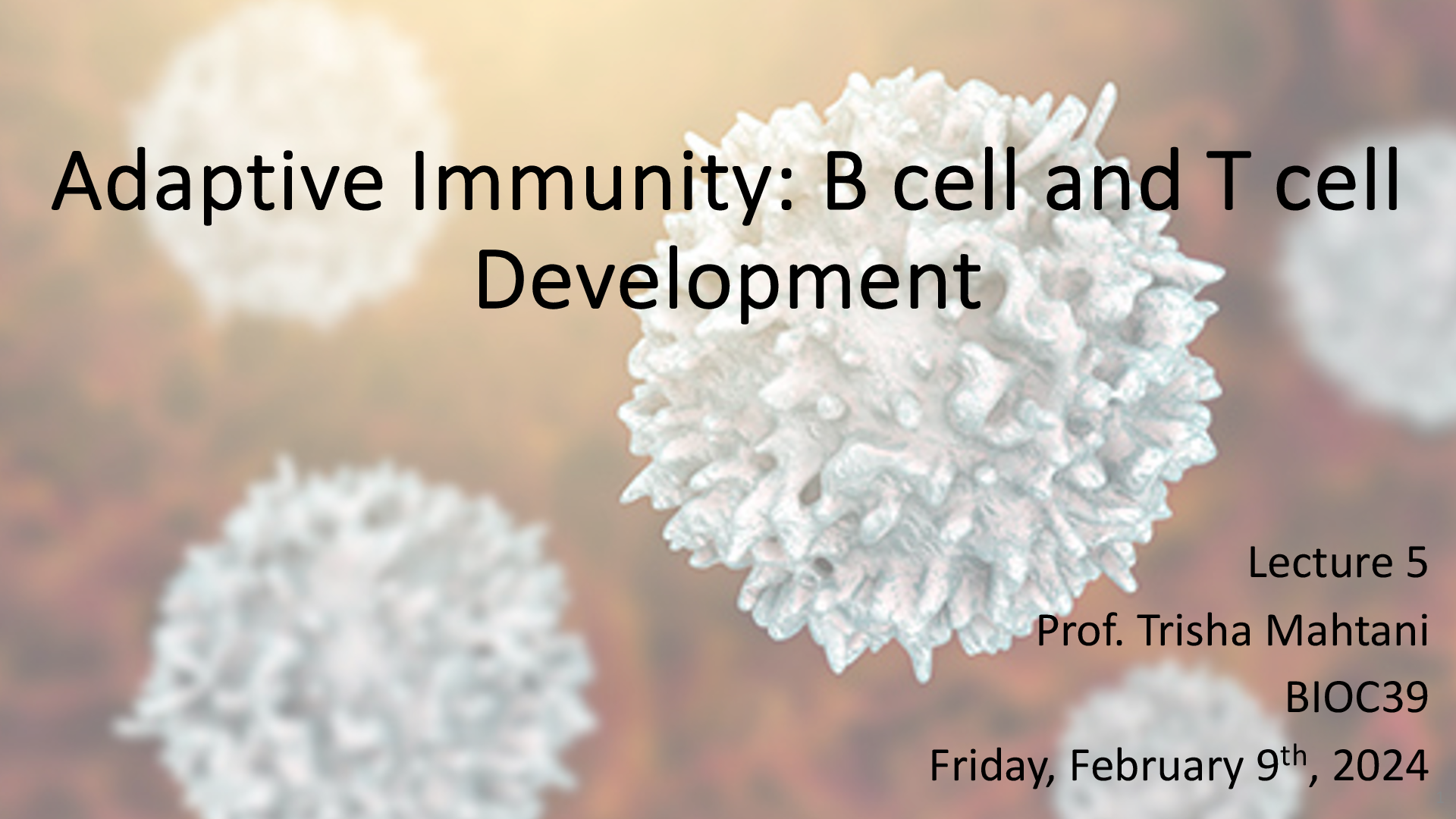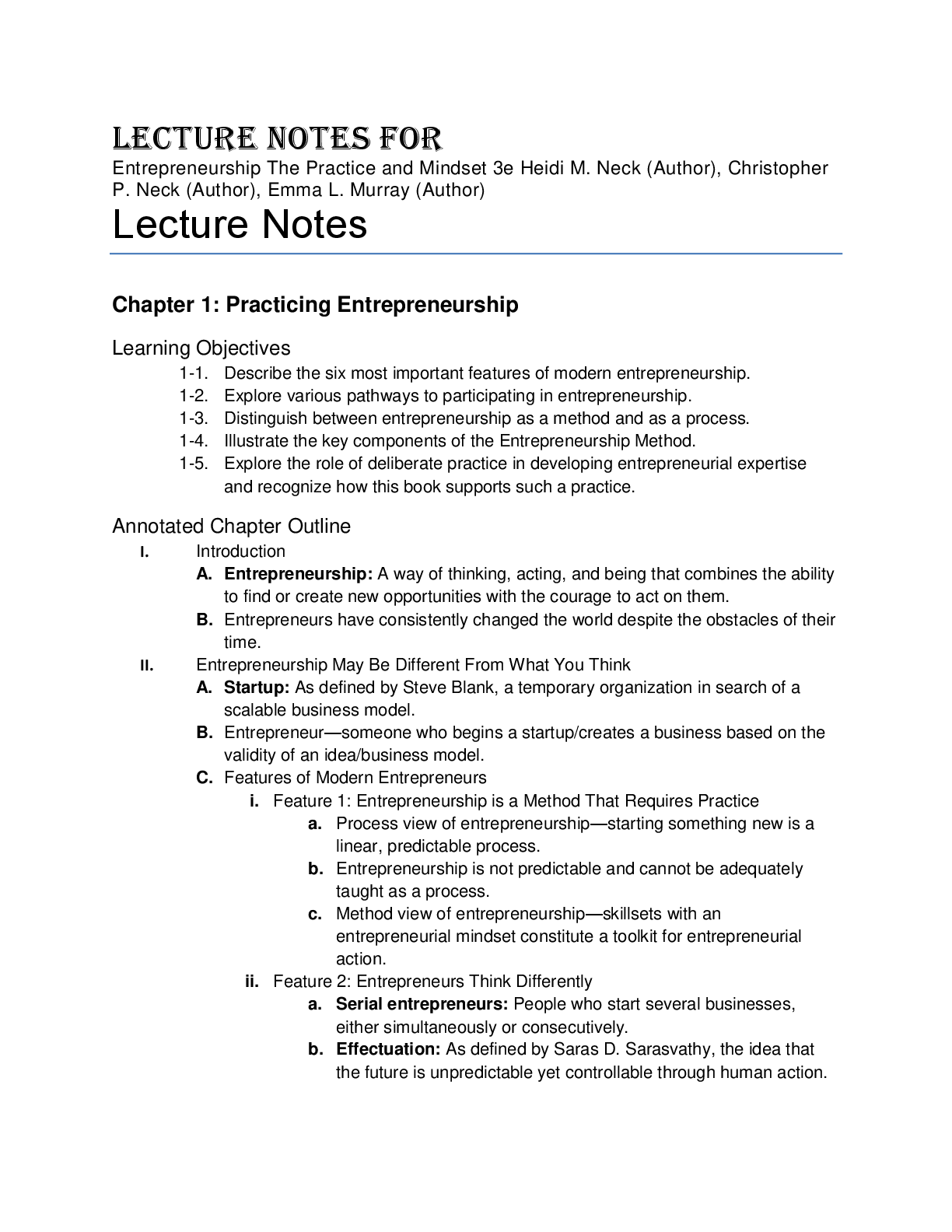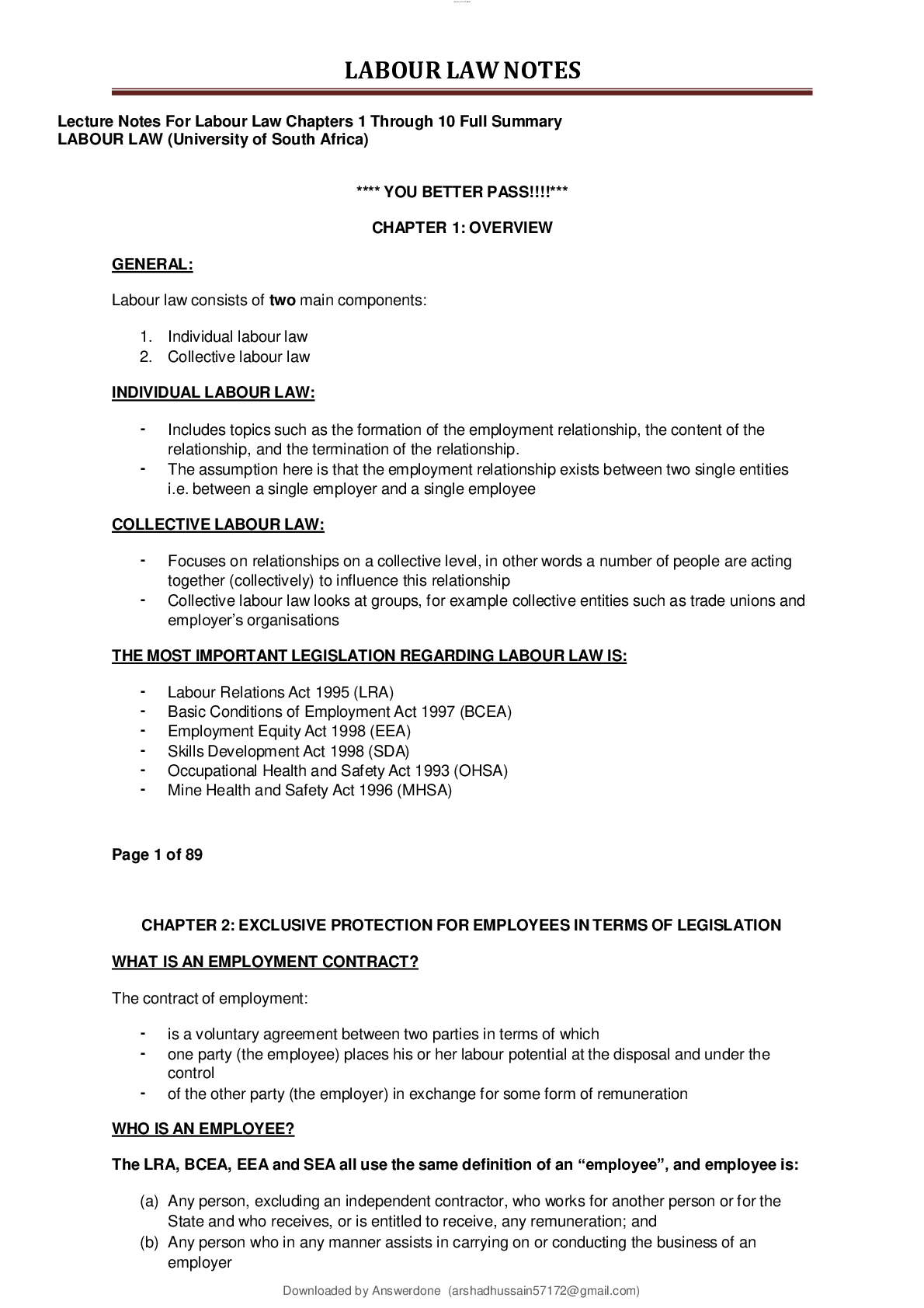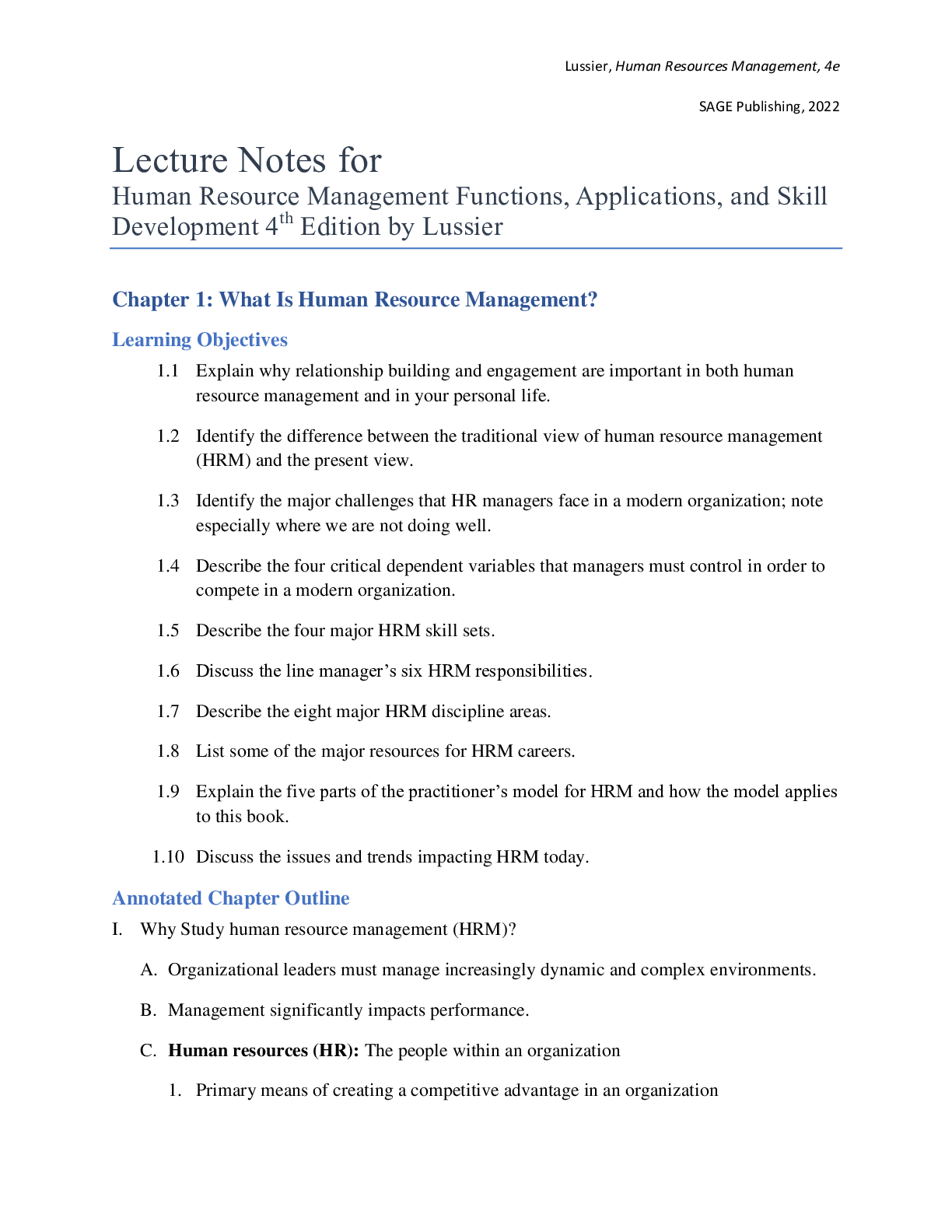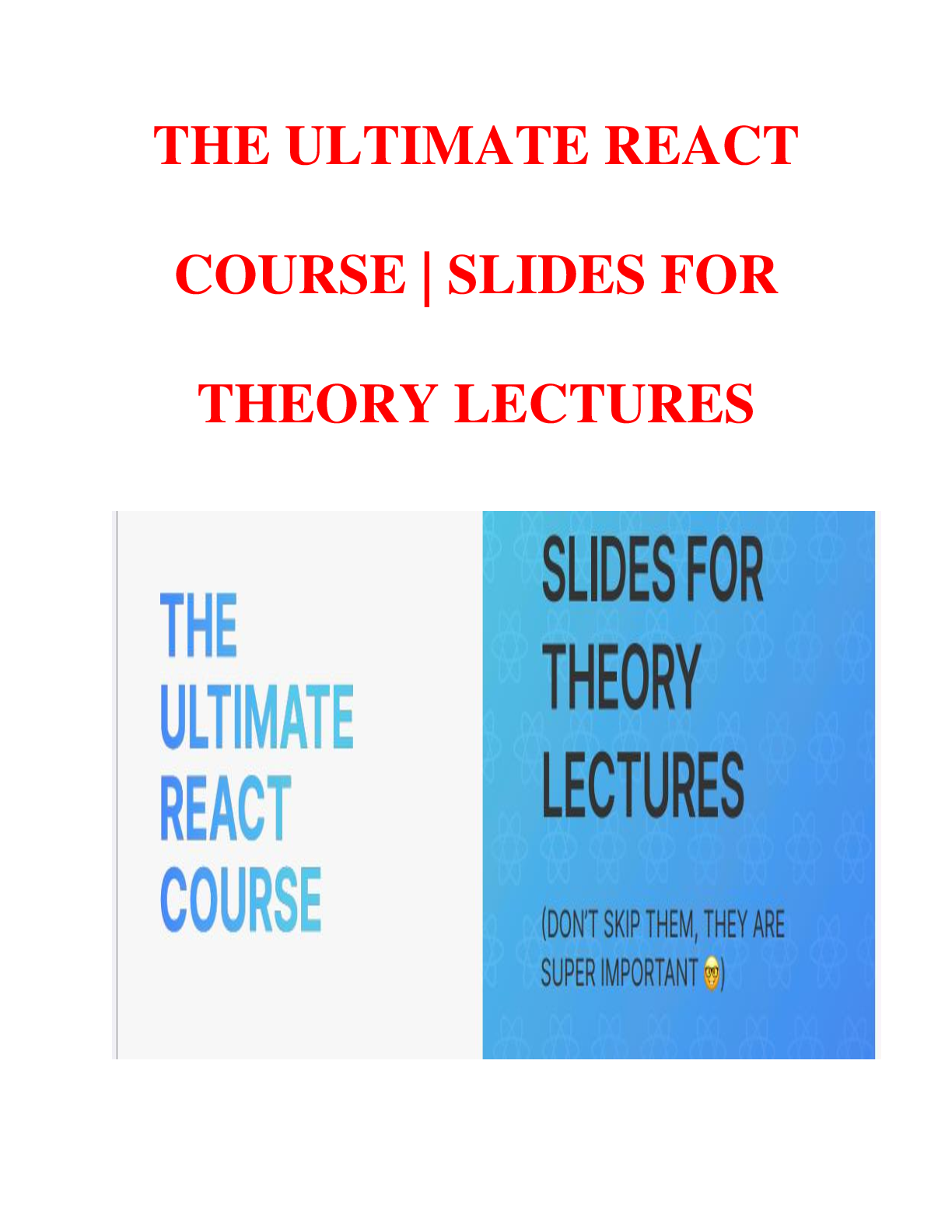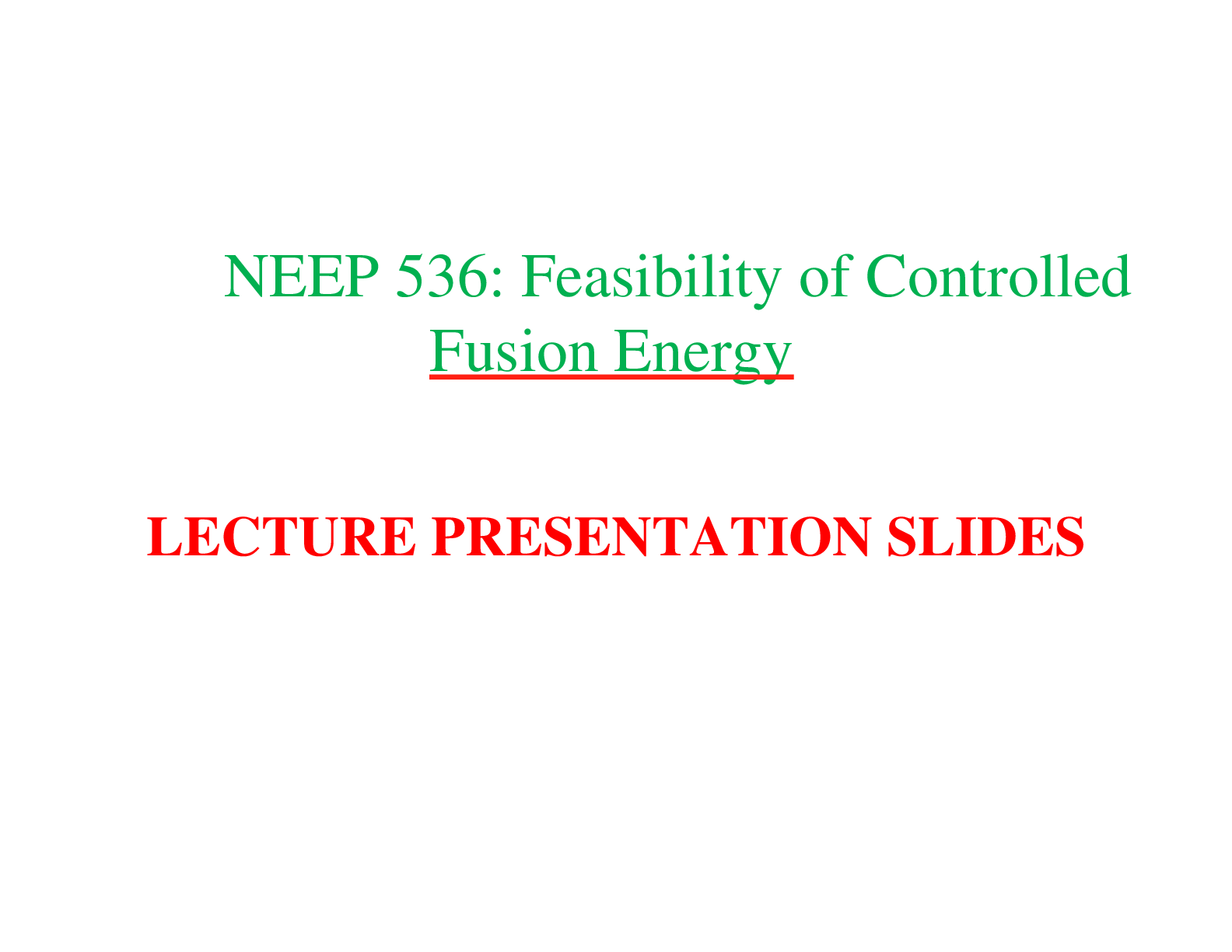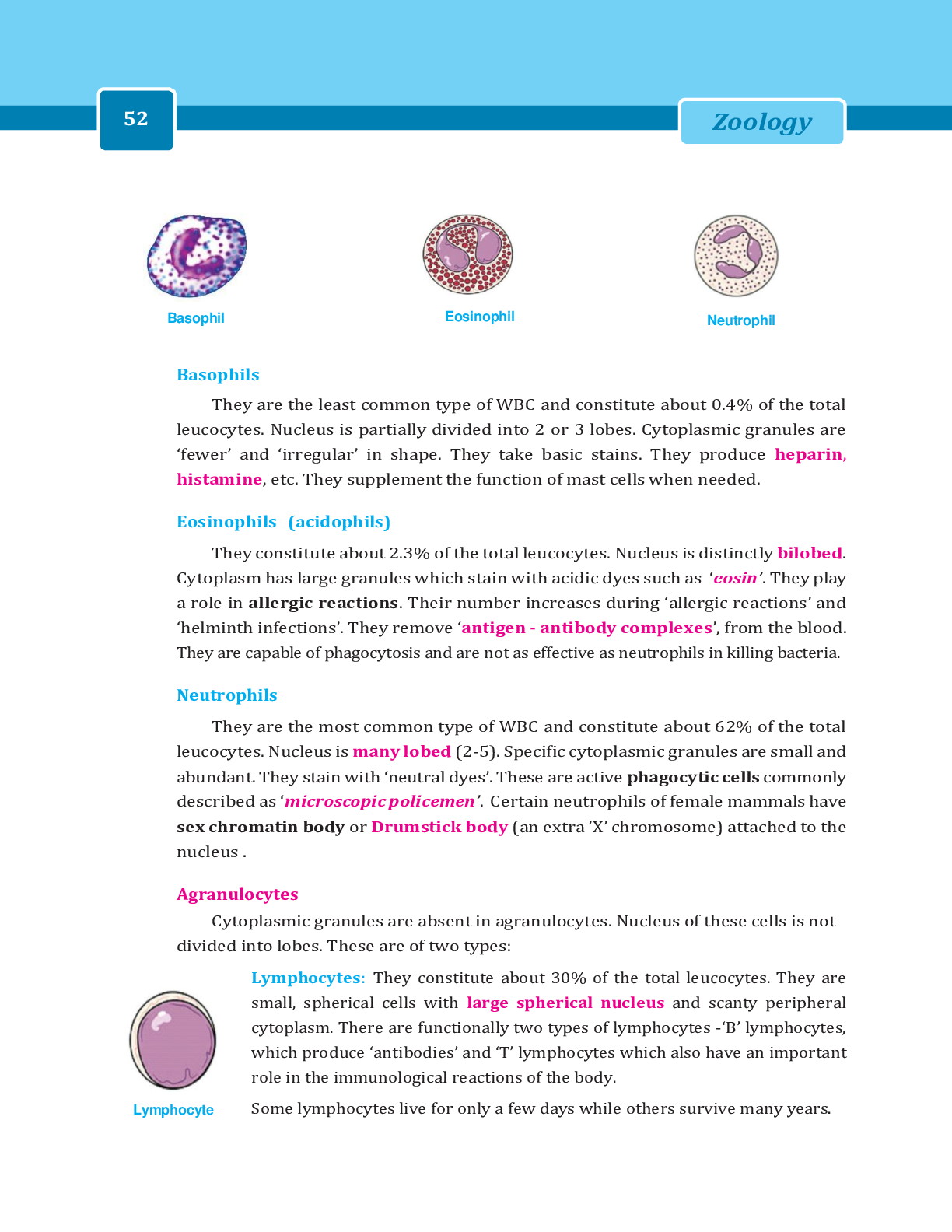ATI Med Surge/ ATI Medsurg > LECTURE SLIDES/NOTES > MED SURG 2 EXAM 1 Study Notes (All)
MED SURG 2 EXAM 1 Study Notes
Document Content and Description Below
MED SURG 2 EXAM 1 STUDY NOTES UNIT TOPIC TB CHAPTER Unit 9: Musculoskeletal Function Assessment of Musculoskeletal Function 39 ATI CHAPTER 67-72 Pharm: 34,45 Musculoskeletal ... Care Modalities 40 Management of Patients w/ Musculoskeletal Disorders 41 Management of Patients w/ Musculoskeletal Trauma 42 Unit 3: Concepts & Challenges in Patient Management Shock & Multiple Organ Dysfunction Syndrome 14 37 CHAPTER 39: ASSESSMENT OF MUSCULOSKELETAL FUNCTION Anatomic & Physiologic Overview Downloaded by Morris Muthii ([email protected]) Structure & Function of the Skeletal System ● 206 bones divided into 4 categories: long, short, flat, irregular - Long bones: found in upper & lower extremities (e.g. femur). Rod shaped or shafts w/ rounded ends - - - Short bones: irregularly shaped located in ankle & hand (e.g. metacarpals, phalanges) Flat bones: extensive protection of underlying structures (e.g. sternum, skull) Irregular bones: cannot be categorized (e.g. vertebrae & jaw bones) ● Cortical bone (compact bone) exists where support is needed & cancellous bone (lattice like bone structure; trabecular bone) is found where hematopoiesis & bone formation occur. ● Bones composed of cells, protein matrix, and mineral deposits. 3 cells include: - Osteoblasts: bone-forming cell; secretes bone matrix - - Osteocytes: mature bone cell for bone maintenance; located in lacunae Osteoclasts: located in shallow Howship’s lacunae. Multinuclear cells that destroy, resorb, & remodel bone. ● Joint: where bone ends meet; provides for motion & flexibility Bone Formation & Maintenance ● Osteogenesis: process of bone formation ● Ossification: process of formation of the bone matrix & deposition of minerals. ● Bone is a dynamic tissue in a constant state of turnover. - During childhood & adolescent years, new bone is added faster than old bone is removed. - - - - Continues until peak bone mass is reached (20 y/o) Complete skeletal turnover occurs every 10 years Balance between bone resorption & formation influenced by: exercise, diet (calcium), hormones (calcitriol, parathyroid hormone, cortisol, growth hormone, sex hormones) Weight-bearing activity supports bone maintenance; any activity done while person is on their feet that works bones & muscles against gravity (e.g. walking, tennis) ● Daily intake of 1,200 mg calcium essential to maintain adult bone mass - Calcium sources: low-fat milk, yogurt, cheese, OJ, cereals, bread ● Young adults need vitamin D intake of 600 IU & adults 50 y/o+ need daily intake of 800-1000 IU - Vitamin D sources: fortified milk, cereals, egg yolks, saltwater fish, liver ● Calcitriol increases blood calcium by promoting calcium absorption from GI tract & facilitates mineralization of osteoid tissue. ● PTH & calcitonin regulates calcium concentration in blood. - Increased PTH prompts calcium mobilization - - Calcitonin inhibits bone resorption & increases calcium deposit into bone SQ/ IM/ IN administration. Watch for bloody nose. Alternate nostrils ● Excessive thyroid hormone & cortisol production can result in increased bone resorption & decreased bone formation ● Long-term cortisol or corticosteroid therapy increases risk for osteopenia & fractures Bone Healing ● Stage 1: Hematoma formation: 1-2 days after fracture. Bleeding & local vasoconstriction. Hematoma forms at fracture site. Cytokines released, initiating fracture healing process (fibroblast Downloaded by Morris Muthii ([email protected]) proliferation causing angiogenesis to occur) ● Stage 2: Fibrocartilaginous callus formation: granulation tissue formation. Fibroblasts & osteoblasts migrate to fracture site & begin bone reconstruction ● Stage 3: Bony callus formation (Ossification): 3-4th week of fracture. Continues until a firm bony union is formed. Mature bone gradually replaces fibrocartilaginous callus & excess callus reabsorbed by osteoclasts. Fracture site feels immovable. Safe to remove cast. ● Stage 4: Remodeling: osteoclasts remove necrotic tissue. May take months to years. Functions of the Musculoskeletal System ● Protection of vital organs ● Framework to support body structures, mobility ● Movement; produce heat & maintain body temperature ● Facilitate return of blood to the heart ● Reservoir for immature blood cells ● Reservoir for vital minerals Structure & Function of the Articular System ● Synarthrosis: immovable joints ● Amphiarthrosis: allow limited movement (e.g. vertebrae or symphysis pubis) ● Diarthrosis: freely movable - Ball & socket: permit full freedom of movement (e.g. hip, shoulder) - - - - Hinge joints: permit bending in one direction via flexion/ extension (e.g. elbow, knee) Saddle joints: allow movement in 2 planes at right angles. Joint at base of thumb is saddle (biaxial joint) Pivot joints: allow one bone to move around central axis (e.g. articulation between radius & ulna) Gliding joints: allows limited movement in all directions (e.g. wrist carpal bones) ● Joint capsule: tough fibrous sheath surrounds articulating bones ● Ligaments: ropelike bundles of collagen fibrils bind articulating bones together ● Tendons: cords of fibrous tissue that connect muscle to bone ● Bursa sac: filed w/ synovial fluid that cushions movement of tendons, ligaments, & bones Muscles ● Composed of parallel groups of cells (fasciculi) encased in fascia. More fasciculi in muscle, more precise movements are ● Sarcomere: contractile unit of skeletal muscle that contains actin & myosin ● Contraction of muscle fibers result in isotonic or isometric contraction: - Isometric contraction: length of muscles remains constant but force generated by muscles is increased (e.g. pushing against wall) - - - Isotonic contraction: shortening of muscle w/o tension increase (e.g. forearm flexion) During sedentary activity, ATP is synthesized from oxidation of glucose to water & Co2 During strenuous activity, glucose is metabolised to lactic acid. Stored muscle glycogen used to supply glucose via anaerobic pathways ● Tendons connect muscle to bone & ligaments connect bone to bone Muscle Maintenance ● Muscle tone - Flaccid: limp & w/o tone - Spastic: muscle w/ greater-than-normal tone Downloaded by Morris Muthii ([email protected]) Atonic: soft & flabby - - - Upper motor neuron lesions produces increased tone (e.g. cerebral palsy) Lower motor neuron lesions produces decreased tone (e.g. muscular dystrophy) ● Hypertrophy: muscle repeatedly develops maximum tension over long time, causing cross- sectional area & muscle fiber size to increase ● Atrophy: decrease in muscle size Assessment of the Musculoskeletal System ● Health Hx - Rest relieves most musculoskeletal pain - - - - - - - - - Pain that increases w/ activity may indicate joint sprain, muscle strain, or compartment syndrome Steadily increasing pain may indicate progression of infectious process (e.g. osteomyelitis, malignant tumor, neurovascular complications) Rheumatic dx & tendonitis pain usually occurs in morning whereas osteoarthritis worsens as day progresses Rheumatoid arthritis: ulnar deviation of fingers & swan neck deformity: hyperextension of proximal interphalangeal joints w/ flexion of distal interphalangeal joints. Bilateral. Pain at rest. Increased pain in morning. Osteoarthritis: pain w/ activity & improves w/ rest. Heberden nodules are classic sign. Crackles. Osteoarthritis Risk Factors: female, smoker, ages, genetics, med use Treatment: NSAIDs, glucosamine, tylenol, injections into knees Rhabdomyolysis: the death of muscle fibers and release of their contents into the bloodstream, which causes renal (kidney) failure & concentrated urine. Paresthesias: sensations of burning, tingling, or numbness ● Physical Assessment - Normal curvature of spine is convex through thoracic portion & concave through cervical & lumbar portions - - - - - - - - Kyphosis: Humpback. Increased forward curvature of thoracic spine that causes bowing or rounding of back, leading to hunchback or slouching posture Lordosis: lumbar curvature. Swayback, exaggerated curvature of lumbar spine (common causes: pregnancy, excessive visceral fat) Scoliosis: lateral curvature deviation of spine Examiner inspects spinal curves & trunk symmetry by standing behind pt & instructs pt to bend backward supporting pt by placing hands on posterior iliac spine Effusion: excessive fluid within capsule; swelling & increased temperature that may reflect inflammation Balloon sign: milk downward, apply medial pressure, tap & watch for fluid wave. Feel for fluid entering space directly below patella. Ballottement sign: medial & lateral aspects of extended knee milked firmly in downward motion. Push patella toward femur & observes for fluid return to region superior to patella. Fasciculation: involuntary twitching of muscle fiber groups ● Neurovascular Status - Compartment syndrome (caused by pressure within muscle compartment that increases until microcirculation diminishes, leading to nerve & muscle anoxia & necrosis). Function cab be lost if anoxic situation continues > 6 hrs Diagnostic Evaluation ● X- Ray studies: determine bone density, texture, erosion, & changes in bone relationships. ● CT: shows detailed cross-sectional image of body to visualize & assess tumors; injury to soft tissue, ligaments, or tendons, & severe trauma. Identifies location & extent of fractures ● MRI: uses magnetic fields & radio waves to create high-resolution pics of bones & soft tissues to Downloaded by Morris Muthii ([email protected]) visualize torn muscles, ligaments, cartilages, herniated discs. - Noisy, may take 30-90 min to finish. Pts w/ metal implants & pacemakers cannot take this test ● Arthrography: identifies cause of unexplained joint pain & progression of joint dx. Radiopaque contrast agent injected into cavity to visualize joint structures. Joint is put through ROM to distribute contrast while in x-rays. If tear is present, contrast leaks out of joint - Compression elastic bandage & joint rested for 12 hrs post-procedure - Expect clicking or crackling in joint for 1-2 days after procedure until contrast agent/ air absorbed ● Bone densitometry: evaluates bone mineral density (e.g. DEXA). BMD of heel can be used to dx & monitor osteoporosis, bone fracture risk ● Bone scan: detects metastatic tumors, osteomyelitis, fractures, aseptic necrosis, & progression of degenerative bone dx. Requires injection of radioisotope via IV - Assess for ax to radioisotopes. Encourage fluids to distribute isotope. - Flushing & warmth to be expected. Drink fluids post-procedure & empty bladder pre-procedure ● Arthroscopy: direct visualization of joint via fiberoptic endoscope. Biopsy & treatment of tears, defects, & dx processes performed through arthroscope. - - Post procedure: Wrap joint w/ compression dressing to control swelling & report signs of complications (e.g. fever, excessive bleeding, swelling, numbness, cool skin) Monitor neuro status ● Arthrocentesis: obtain synovial fluid for purposes of examination or to relieve pain due to effusion. Dx septic arthritis & inflammatory arthropathies - Ice given 1-2 days post-procedure ● Electromyography: assesses electrical potential of muscles & nerves leading to them to evaluate muscle weakness, pain, & disability - C/I in pts receiving anticoagulants, extensive skin infections. Electrodes may cause bleeding. - Avoid using lotions/ creams on day of test ● Biopsy: determines structure & composition of bone marrow, muscle, or synovium to help dx specific dx - Monitor site for edema, bleeding, pain, hematoma formation, & infection ● Laboratory studies - Phosphorus decreased in osteomalacia - - - - - - - - Acid phosphatase increased in Paget’s dx & metastatic cancer Alkaline phosphatase increased during early fracture healing & dx w/ increased osteoblastic activity (e.g. metastatic bone tumors) Bone metabolism increased via calcitonin, PTH, vitamin D levels Creatine kinase, aspartate aminotransferase increased w/ muscle damage Serum osteocalcin indicates rate of bone turnover Urine calcium levels increased w/ bone destruction Urinary N-telopeptide of type I collagen & deoxypyridinoline reflect increased osteoclast activity & increased bone resorption Increased serum levels of bone specific alkaline phosphatase, osteocalcin, & intact N- terminal propeptide of type 1 collagen reflect increased osteoblast activity & enhanced bone remodeling activity CHAPTER 40: MUSCULOSKELETAL CARE MODALITIES Casts ● Rigid external immobilizing device molded to contours of body. ● Used to: immobilize reduced fracture, correct deformity, apply uniform pressure to soft tissues, and support to stabilize joint. ● Most common casting materials consist of fiberglass or plaster of Paris [Show More]
Last updated: 9 months ago
Preview 1 out of 20 pages

Loading document previews ...
Buy this document to get the full access instantly
Instant Download Access after purchase
Buy NowInstant download
We Accept:

Also available in bundle (3)
Click Below to Access Bundle(s)
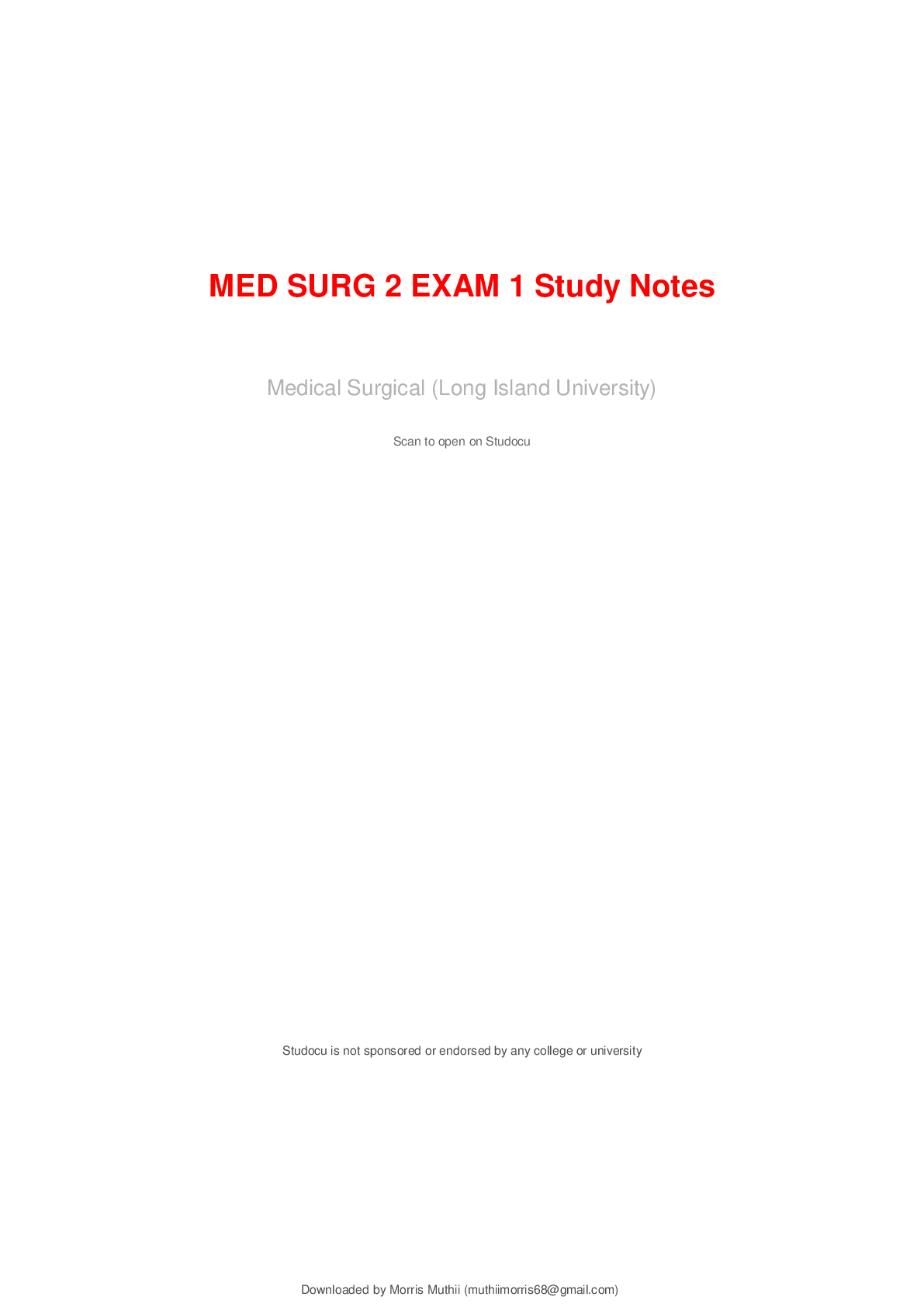
Test Bank Medical-Surgical Nursing, Clinical Reasoning in Patient Care, Gth LeMone – Burke – Bauldoff – Gubrud 2025-2026 Latest
example of the core competency evidence-based practice. Collaboration between disciplines to provide continuous and reliable care is an example of the core competency teamwork and collaboration. C...
By NurseBailley 8 months ago
$70.5
7
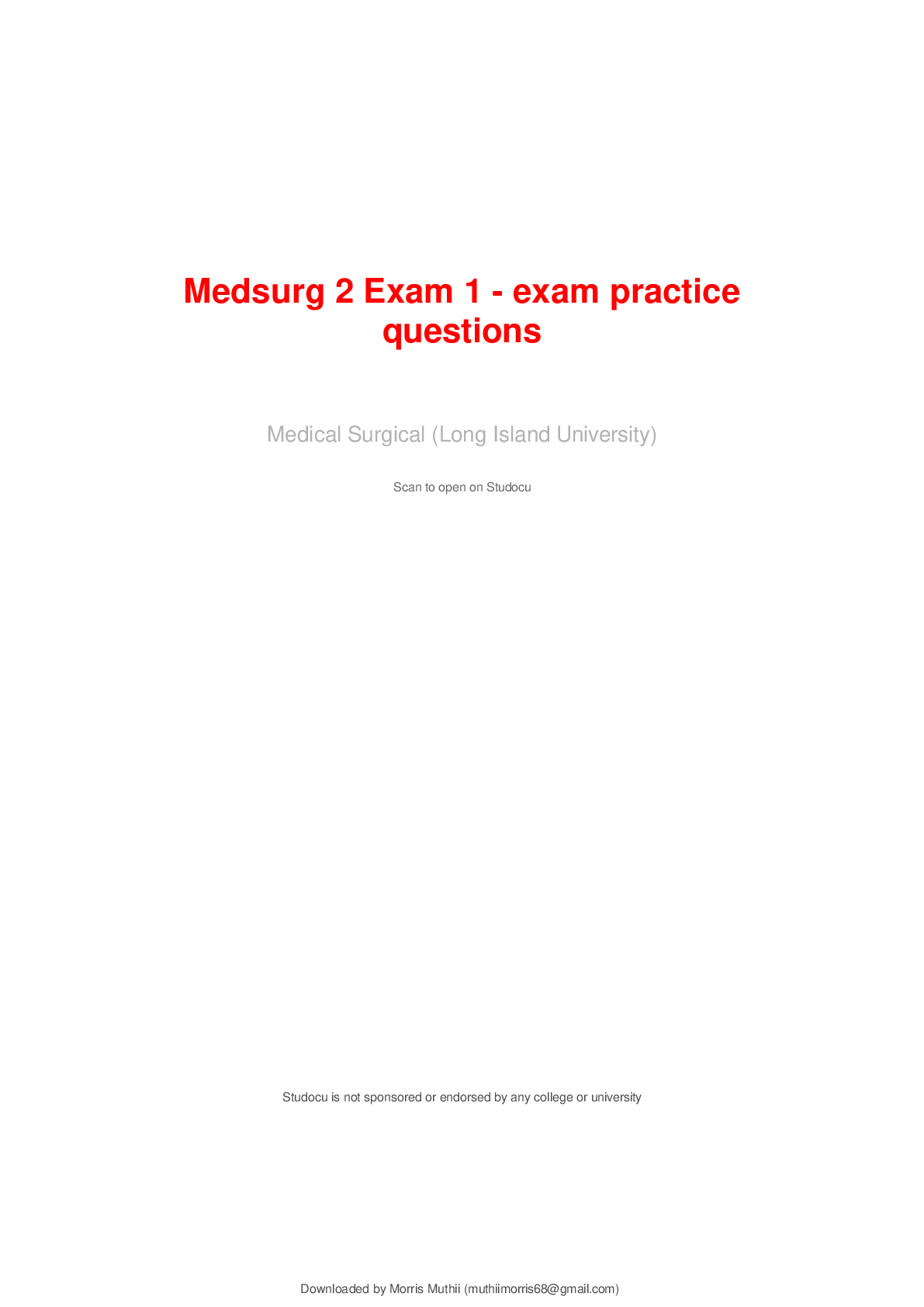
Medsurg cardiac meds, CAD, angina (part1)
Systemic Transport: Process of providing enough blood, oxygen, and nutrients to the cells of the body. -Heart begins to beat at 8 weeks gestation -Our heart needs 70-80% of Oxygen and is perfused du...
By NurseBailley 9 months ago
$42.5
4

Med surg week 9 , 10 , 11 , 12 wk 13 is exam
Functions of Kidney; -produce urine - eliminated excess waste and toxicity - Uremia (urine goes into bloodstream) -water volume or hydration status - fluid volume excess -Blood Pressure regulation - U...
By NurseBailley 9 months ago
$45.5
4
Reviews( 0 )
$14.50
Can't find what you want? Try our AI powered Search
Document information
Connected school, study & course
About the document
Uploaded On
Mar 15, 2025
Number of pages
20
Written in
All
Additional information
This document has been written for:
Uploaded
Mar 15, 2025
Downloads
0
Views
60

